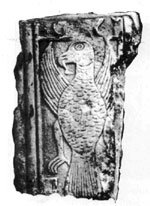Robert Elsie
Texts and Documents of Albanian History
Albanian History
1000 — 1799
The daughter of the Byzantine emperor provides an account of her father’s battle with the invading Normans near Durrës and Ndroq.
Byzantine historian Michael Attaliates gives the earliest references to the Albanian people as recorded in Byzantine historical texts.
The daughter of the Byzantine emperor provides an account of her father’s battle with the invading Normans near Durrës and Ndroq.
A short description of Albania by a 12th century Arab geographer.
A Byzantine historian chronicles a 13th century Albanian rebellion in the Ohrid and Dibra region.
A Byzantine historian describes the earthquake that destroyed Durrës in July 1267.
An anonymous French Dominican priest describes his tour through early 14th century Albania.
Two Franciscan clerics from Ireland describe Albania on their pilgrimage to the Holy Land, and refer to the Albanian language.
The Byzantine Emperor John VI Cantacuzene makes several brief references to the Albanians in this text, describing them as wild and unruly nomads.
A Dominican priest makes reference to the Albanian language in this description of the country and how easy it would be for the Catholic world to conquer it.
The earliest personal account given by an Albanian about the state of his country.
An Italian historian narrates the Ottoman siege of Shkodra in September 1474.
The “Nuremberg Chronicle” of the German humanist Hartmann Schedel (1440-1514) contains what is possibly the earliest description of Albania and the western Balkans printed in central Europe.
A German pilgrim visits Durrës on his way to the Holy Land and jots down words and expressions in the Albanian language.
The death of Scanderbeg, as recounted by Renaissance historian Marinus Barletius.
The oldest substantial text written by an Albanian.
A short nautical description of the Albanian coastline by an Ottoman navigator.
In his geography book, the sixteenth-century German humanist Sebastian Franck describes Albania and the western Balkans as it was known in Europe in his day.
A travel description of Albania provided by an anonymous Venetian official.
The harrowing journey of a Venetian nobleman through the wilds of Albania.
A French squire stops over in Vlora and his men are taken hostage by pirates.
The description of an overland journey through late 16th-century Ottoman Albania.
The Catholic Archbishop of Bar (Antivari) provides a highly informative account of his tour through Turkish-occupied northern Albania to visit his oppressed flock.
A Venetian official shows the possibilities of overland travel through Montenegro and northern Albania, and provides detailed information on towns and villages.
Bishop Pjetër Budi writes to the Vatican in order to instigate a native uprising against Ottoman rule.
A description of northern Albania and its martial inhabitants in a report that Pjetër Mazrreku (Ital. Pietro Maserecco), the Catholic Archbishop of Antivari (Bar) and Primate of Serbia, sent to the Sacred Congregation of the Propaganda Fide. In this text, the archbishop also adds a list of Albanian words to show their affinity to Italian.
Frang Bardhi the Bishop of Sapa and Sarda, set out on a pastoral visit to the rarely visited Puka region in the mountains and reported on his journey to the Sacred Congregation of the Propaganda Fide in Rome.
In June of 1638, Bishop Frang Bardhi sent a report on his pastoral visit in the mountains to the Sacred Congregation of the Propaganda Fide in Rome. Included in it is this somewhat glorified text about the northern Albanian Kelmendi tribe under attack from the Pasha of Bosnia.
A detailed report to the Vatican about the Diocese of Sapa and the “tyranny of the Turks.”
Mark Kryeziu, known in Italian as Marco Crisio, was an Albanian priest and Apostolic Visitor and Commissioner who reported to the Sacred Congregation of the Propaganda Fide in Rome on his journey through northern Albania in 1653, a period of rapid Islamisation.
The famed Ottoman traveller recounts his journey through 17th-century Kosova (Kosovo).
The famed Ottoman traveller recounts his journey through 17th-century northern Albania and Montenegro.
A British traveller leaves a brief description of Skopje and Kosovo in 1669
The famed Ottoman traveller describes his visit to Lake Ohrid in the 17th century.
The famed Ottoman traveller describes his visit to 17th-century Berat and Elbasan, with amazing descriptions of the two towns.
The famed Ottoman traveller describes his visit to 17th-century Gjirokastra in southern Albania.
The famed Ottoman traveller describes his visit to 17th-century Vlora and Durrës.
A Vatican official tours northern Albania to report on the situation of the Catholic Church and clergy there.
A French physician sails down the coast of Albania in the summer of 1675.
Description of the Austrian military offensive against Ottoman forces in Kosovo, Macedonia and northern Albania.
Schilderung von Kriegsereignissen in Kosovo, Makedonien und Nordalbanien während einer kaiserlich-österreichischen Offensive gegen das osmanische Heer.
The wife of the British Ambassador in Istanbul gives her impressions of an encounter with some Albanians.
The great German philosopher also devoted his attention to the then little-known Albanian language. Given here are excerpts from his correspondence.
This treatise by the Swedish historian Johann Thunmann is the earliest scholarly study on the Albanians.
An early report on families of Albanian Kelmendi tribesmen who, in the mid-eighteenth century, settled in Syrmia west of Belgrade, in present-day Serbia.
